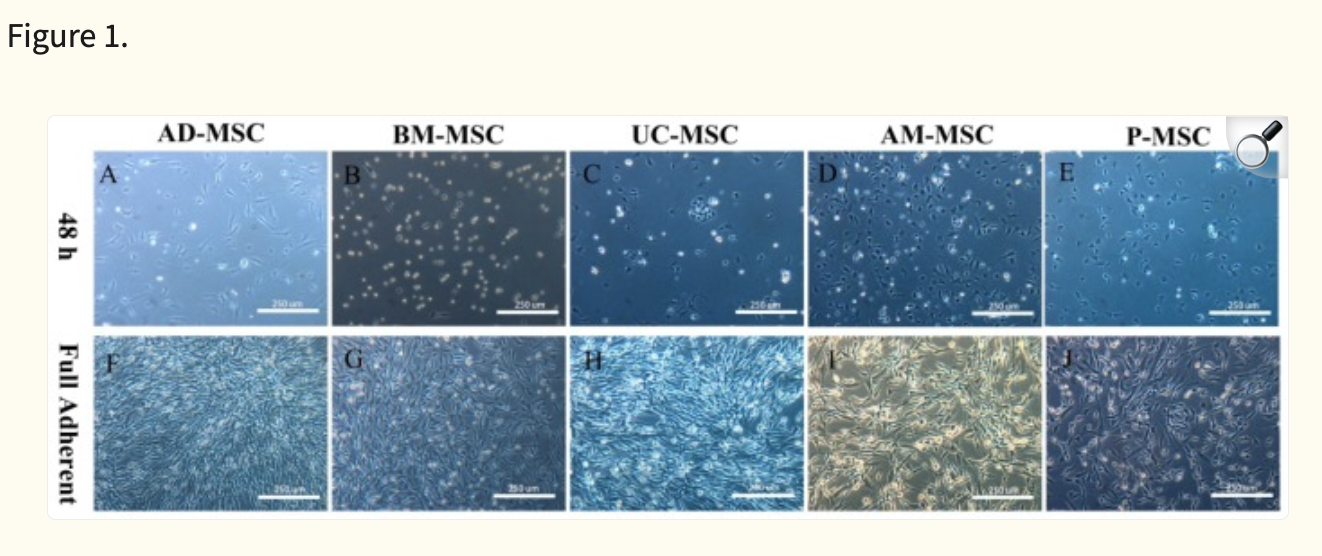A comparative study of Biological Characteristics and Transcriptome Profiles of Mesenchymal Stem Cells from Different Canine Tissues

Elita Summary
Choosing the right stem cell source is a fundamental part of developing reliable regenerative therapies. In this 2019 study, Zhan et al. compared mesenchymal stem cells (MSCs) derived from five different canine tissues, adipose tissue, bone marrow, umbilical cord, amniotic membrane, and placenta, to evaluate how tissue origin influences growth, differentiation, and gene expression.
Study Design at a Glance
- Objective: To compare the growth characteristics, differentiation capacity, and gene expression profiles of MSCs derived from five different canine tissues to determine how tissue source influences therapeutic potential.
- Tissue sources:
- Adipose tissue (AD-MSCs)
- Bone marrow (BM-MSCs)
- Umbilical cord (UC-MSCs)
- Amniotic membrane (AM-MSCs)
- Placenta (P-MSCs)
- Methods:
- Cell culture & proliferation: Population doubling time measured to assess growth rates.
- Surface marker analysis: CD44 (positive) and CD34 (negative) expression confirmed MSC phenotype.
- Differentiation assays: Adipogenic and osteogenic potential assessed with timeline tracking.
- RNA sequencing: Global transcriptomic profiling to compare gene expression signatures across tissue types.
Key Findings
- Proliferation: AD-MSCs had the shortest doubling time (~15.8 hours), indicating the fastest growth rate.
- Differentiation: AD-MSCs also initiated adipogenic and osteogenic differentiation faster than other MSC types.
- Transcriptomic profile: While BM-MSCs and AD-MSCs were closely related, placenta-derived MSCs showed distinct expression profiles, suggesting different functional potential.
- Surface markers: All MSCs consistently expressed CD44 and were negative for CD34.
Limitations
- This was an in vitro-only study, so no clinical outcomes were measured.
- All samples were taken from a single donor breed (Chinese pastoral dogs), limiting generalisability.
- Chondrogenic potential was not assessed, which is relevant for OA indications.
Why It Matters to Us
The source of tissue used to isolate MSCs can significantly influence the biological characteristics of the resulting cells. This study compared five MSC types and found that adipose-derived cells had the shortest doubling time, and the most rapid adipogenic and osteogenic differentiation. That makes adipose not only accessible, but biologically efficient.
At Elita, our mesenchymal stem cell product is adipose-derived by design. Studies like this support our view that fat-derived MSCs may offer clinical advantages over those sourced from bone marrow, placenta, or cord tissue, and reinforce our decision to build on established, high-performing protocols.
